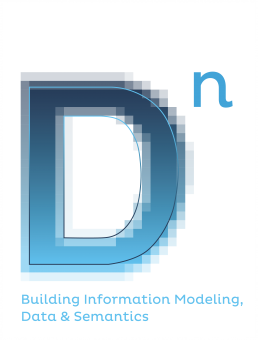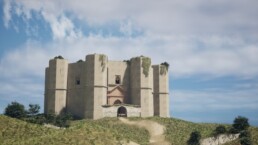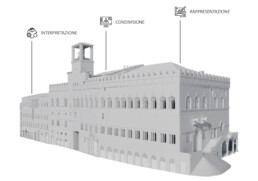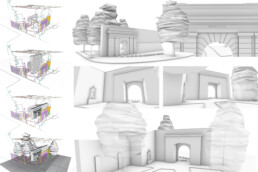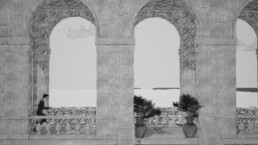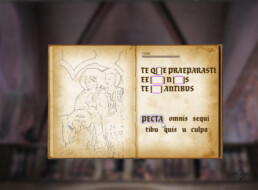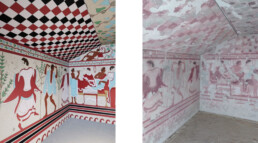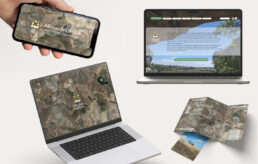Index Volume 15
INDEX
Editorial
M. Lo Turco, A. Luigini
A New Interface for the Museum Cultural Experience: Gamification and Websites
J. Bono
HBIM and Visual Programming: data management for historic heritage preservation
M. Cozzali, F. Bianconi, M. Filippucci
Digital Landscapes and multi-scalar representations to rediscover the fortified system of Verona
F. Galasso
In the Apulian furrows. A picturesque adventure through the engravings of the Grand Tour
P. Micelli
Reconstruction of the Necropolis area related to the Triclinium Tomb and design of a virtual tour
S. Ridolfi
ARound Murgia: transmedia dissemination approaches for the Alta Murgia National Park
A. Caldarone
A new interface for museum cultural experience: gamification and websites
ABSTRACT
In a context characterized by the increasing fusion of information technologies and the cultural sector, cultural institutions like museums must adopt digital methods and tools capable of interpreting and embracing this change by creating new experiences. Today, museums also compete with new forms of entertainment, with gamification experiences standing out in particular.
In response to this transition, museums are adopting this new ‘medium’ to rethink how they engage with their audiences. This contribution focuses on using and integrating gamification techniques within museum webpages, creating an interface that enables the museum website to become a valid educational and community platform. This interface enhances user engagement and increases loyalty through points, badges, and leaderboards. It encourages users to repeat the experience, improve their performance, extend navigation time, and stimulate user-generated content. The exploration of these new dynamics is applied to the Pinacoteca Albertina website, specifically the exhibition ‘Neoclassicism in Turin. From the 18th century to the young Antonelli’. Previously, the research team carried out a digital and immersive reconstruction of the visionary project for the Turin Cathedral. The described experience represents the completion of a broader initiative aimed at improving the accessibility and interactivity of the exhibited collection using web-based gamification techniques.
Jacopo Bono
Dipartimento di Architettura e Design (DAD) - Politecnico di Torino
HBIM and Visual Programming: data management for heritage preservation
ABSTRACT
The research investigates how HBIM, integrated with Visual Programming tools, improves data management for heritage conservation. The digital model centralizes heterogeneous information, optimizing monitoring and maintenance processes. The use of Dynamo automates data processing and export, promoting interoperability. The case study of the Library of the National Gallery of Umbria demonstrates the effectiveness of the method for sustainable and dynamic management.
Matilde Cozzali, Fabio Bianconi, Marco Filippucci
Università degli Studi di Perugia, Dipartimento di Ingegneria Civile e Ambientale
Digital Landscapes and multi-scalar representations to rediscover the fortified system of Verona
ABSTRACT
The paper explores methods of multiscalar digital representation of the fortified system of Verona, highlighting the importance of an approach capable of combining high resolution metric data with the construction of a coherent narrative of the cultural landscape in digital space. The walls and bastions that frame cities represent the connective tissue of urban identity, integrating within them traces of history, social dynamics and architectural values, transforming from a defensive structure to a living, stratified cultural symbol. The adoption of surveying techniques to document fortified structures has generated an extremely dense but difficult to manage database. Research has introduced processes of discretization and definition of levels of detail, modulating the density of information in relation to the purposes of analysis and dissemination. This choice encouraged the recomposition of the wall system through a three-dimensional model, where simplification proves to be an added value. The multiscalar model becomes a narrative and management device, a link between technical data and cultural interpretation, capable of guiding future documentation campaigns that will be conducted in the area. The results achieved to date by the Verona Città Murata project, the result of the collaboration between the Municipality of Verona and the University of Pavia, reveal how the transition from reality-based data to digital representation marks a methodological transformation that renews the way in which the fortified heritage is interpreted and enhanced.
Francesca Galasso
Department of Civil Engineering and Architecture, University of Pavia
In the Apulian furrows. A picturesque adventure through the engravings of the Grand Tour
ABSTRACT
The research explores the phenomenon of digital technology under the form of video game experiences aimed at communicating territorial enhancement. The chosen direction is the design of a serious game with the objective of promoting and valuing the Apulian territory through virtual reconstructions of 18th-century engravings related to the Grand Tour. The ultimate goal of the study is to find an optimal point of hybridization between the cultural and gaming realms, starting from the analysis of the phenomenon of games and video games. It continues by attempting to extract a corpus of serious games that interact at various levels with cultural enhancement, and further outlines the conGrand Tours of the Grand Tour phenomenon and its spread within the Apulian territory to extract a set of relevant engravings.
The methodological intent of the research is to outline a scientific and replicable method for the investigation and three-dimensional reconstruction of engraved images, aiming also to restore the materiality of the engraving technique in defining the assets of a serious game. This game is conceived as a side-scrolling adventure set within the virtual reconstructions of the studied engravings.
Pasquale Micelli
Dipartimento di Storia, Disegno e Restauro dell’Architettura, Sapienza Università di Roma
Digital Technologies for Cultural Heritage Education: an applied game for the enhancement of the Baptistery of Bressanone
ABSTRACT
The article examines the use of digital technologies, with particular attention to serious games, for cultural heritage education, in order to design an applied game dedicated to the enhancement of the frescoes of the Bressanone Baptistery. The analysis of the state of the art highlights how the adoption of digital technologies in education has recorded significant growth in recent years, with increasing attention to the use of serious and applied games. The project “Klara and the secret of the baptistery” is therefore configured as a narrative and puzzle game set in the Baptistery of San Giovanni: the digitization of the Baptistery was carried out using advanced technologies such as the Terrestrial Laser Scanner and 3D modeling, integrating the model into the Unity software to create a realistic game environment. Future developments of the project include optimization for mobile devices and the integration of immersive technologies such as Virtual Reality and Augmented Reality, in order to expand accessibility and further enrich the interactive experience.
Giuseppe Nicastro
Libera Università di Bolzano
Recostruction of the necropolis area related to the Triclinium Tomb and creation of a Virtual Tour
ABSTRACT
This contribution presents the reconstruction of the Tomb of the Triclinium, both in terms of its decorative and architectural aspects, as well as the surrounding area of the Monterozzi Necropolis. The aim is to create a Virtual Tour that allows exploration of the site as it appeared during the Etruscan period. The chosen approach is educational-emotional which requires a solid analytical foundation to translate relevant features into 3D elements or informative interfaces. The study of the Tomb of the Triclinium and its surroundings, essential for a deeper understanding of the artistic and historical value of the cultural site, revealed that, due to significant changes over centuries, the most suitable ICT technology for reconstructing and relocating the place in its original context is Virtual Reality. The reconstruction process unfolds in three stages: reproducing the frescoes inside the underground chamber, modeling the tomb and environment and assembling the digitalized elements within Unreal Engine. The final phase involves defining the user’s interaction dynamics and creating the Virtual Tour app for installation in the VR headset. The goal of the project is to establish a methodology for the enhancement of a lost or damaged cultural heritage through an immersive, educational and emotional user experience.
Silvia Ridolfi
Ricercatrice indipendente
ARound Murgia: transmedia dissemination approaches for the Alta Murgia National Park
ABSTRACT
L’articolo esamina le potenzialità delle procedure Scan-to-BIM, implementate tramite metodologie di rilievo speditive, per la costruzione di un modello digitale rappresentativo dell’architettura storica.
Attraverso la sperimentazione effettuata su un caso studio, il Castello di Almonecir nella Comunità Valenciana, la ricerca mira a produrre un sistema informativo integrato e parametrico che consenta di relazionare la fortezza con il suo contesto culturale e storico. Grazie a questo, sarà possibile avviare un processo conoscitivo del monumento facilitandone la comprensione e la gestione, con potenziali applicazioni turistiche all’interno del territorio Valenciano.
Adriana Caldarone
Dipartimento di Storia, Disegno e Restauro dell’Architettura, Sapienza Università di Roma
Index Volume 14
INDEX
Editorial
T. Empler
H-BIM and GIS for analysis and philological reconstruction of Almonecir castle in Spain
A. Pettineo, A. Dell’Amico, F. Picchio, S. Parrinello 6
H-BIM models generation with artificial intelligence
L. Ceccarelli
Damage survey management: IFC models for historical heritage
T. Zanni, C. Zanchetta, M. R. Valluzzi
BHoM & Structural Engineering – A Specialized Approach in Multidisciplinary Projects
G. Albieri, S. Avellini
HBIM to define information. Digital Ecosystems for the conservation of the architectural heritage of the Basilica of Santa Maria degli Angeli
F. Bianconi, M. Filippucci, C. Cerbai, F. Cornacchini, S. Bertocci
Digital Transition and University Building Heritage. Innovations and challenges
in teaching engineering courses
N. Campofiorito, R. Garozzo, C. Santagati
Parametric implementation of urban microclimate models of historical villages
E. Verticchio, M. Calvano, F. Calcerano, L. Martinelli, L. Cessari, E. Gigliarelli
Editorial Vol. 14
“New evolutions” in the field of three-dimensional modeling are profoundly changing the way in which cultural and architectural heritage is managed and valorized, opening the way for multiple innovative considerations and applications.
A representative example of these new methodologies is the contribution entitled “Scan-to-BIM procedures for typological analysis and philological reconstruction of the Almonecir castle in Spain”. This project uses the scan-to-BIM methodology to build an integrated parametric information system, which relates the castle to its historical and cultural context. The digital reconstruction allows not only a detailed typological analysis of the monument, but also a philological reconstruction, ensuring fidelity to the original characteristics of the castle. This methodology is essential for the conservation and management of historical assets and for practical applications such as tourism, especially in the Valencian Community.
Another crucial topic concerns the integration of artificial intelligence (AI) in BIM procedures, as shown in the contribution “H-BIM models generation with artificial intelligence”. Here, advanced semantic segmentation and automatic hierarchization techniques improve the management of complex data obtained from three-dimensional surveys. This approach facilitates the creation of accurate and optimized H-BIM models through a semi-automatic workflow based on hierarchical classification, accelerating and refining the modeling process for the conservation of cultural heritage.
In the field of historical heritage management, the contribution “Damage survey management: IFC models for historical heritage” presents the OpenHBIM approach, based on IFC standards, to digitize damage information on historical buildings. Through a structured and interoperable database, this system allows collaborative management of information, improving efficiency in monitoring and conservation of buildings, and facilitating advanced structural analyses.
In parallel, the article “BHoM & Structural Engineering – A Specialized Approach in Multidisciplinary Projects” shows how interoperability and advanced algorithmic workflows, enabled by the Building and Habitat Object Model (BHoM), are transforming structural engineering. This open-source tool improves multidisciplinary collaboration and allows for the management of complex projects, as demonstrated in the case of a large-scale redevelopment project in Saudi Arabia, where the BHoM facilitated the development of advanced algorithmic workflows.
The article “Informative Ecosystems and HBIM. The Basilica of Santa Maria degli Angeli from Survey to Facility Management” illustrates how BIM can optimize the management of cultural heritage, integrating historical and architectural information with structural monitoring for efficient Facility Management. This HBIM approach is particularly useful for the conservation and management of complex historical buildings, allowing a holistic and detailed view of the monument to plan maintenance and restoration interventions proactively.
The paper “Digital Transition and University Building Heritage. Innovations and Challenges in the Teaching of Engineering Courses” focuses on the training of engineers and architects in the context of the digitalization of the university building heritage. The research explores the importance of scan-to-BIM techniques in university courses, analyzing how the digital transition is transforming the way of teaching and managing survey and parametric modeling projects of existing buildings.
Finally, the article “Parametric implementation of urban microclimate models of historic villages” completes this overview with the application of Computational Fluid Dynamics (CFD) to study the microclimate of historic villages. Thanks to a parametric workflow based on Visual Programming Languages (VPL), it is possible to model the behavior of the microclimate in different temporal and environmental contexts, providing valuable data for the conservation and sustainable management of these sites.
In conclusion, these “new evolutions” in three-dimensional modeling are radically transforming the way we manage, preserve and enhance our historical and cultural heritage, thanks to a growing integration between technology, artificial intelligence and collaborative data management.
Tommaso Empler (Sapienza Università di Roma)
